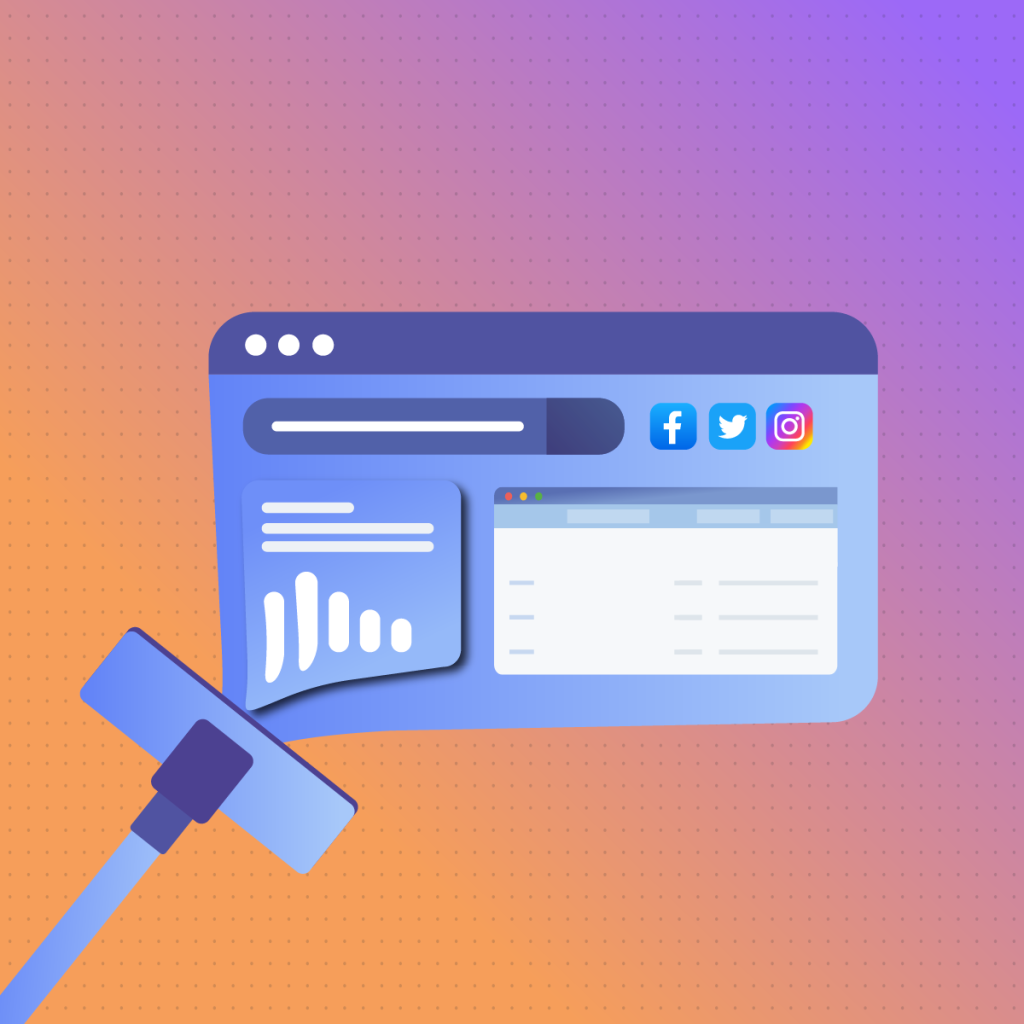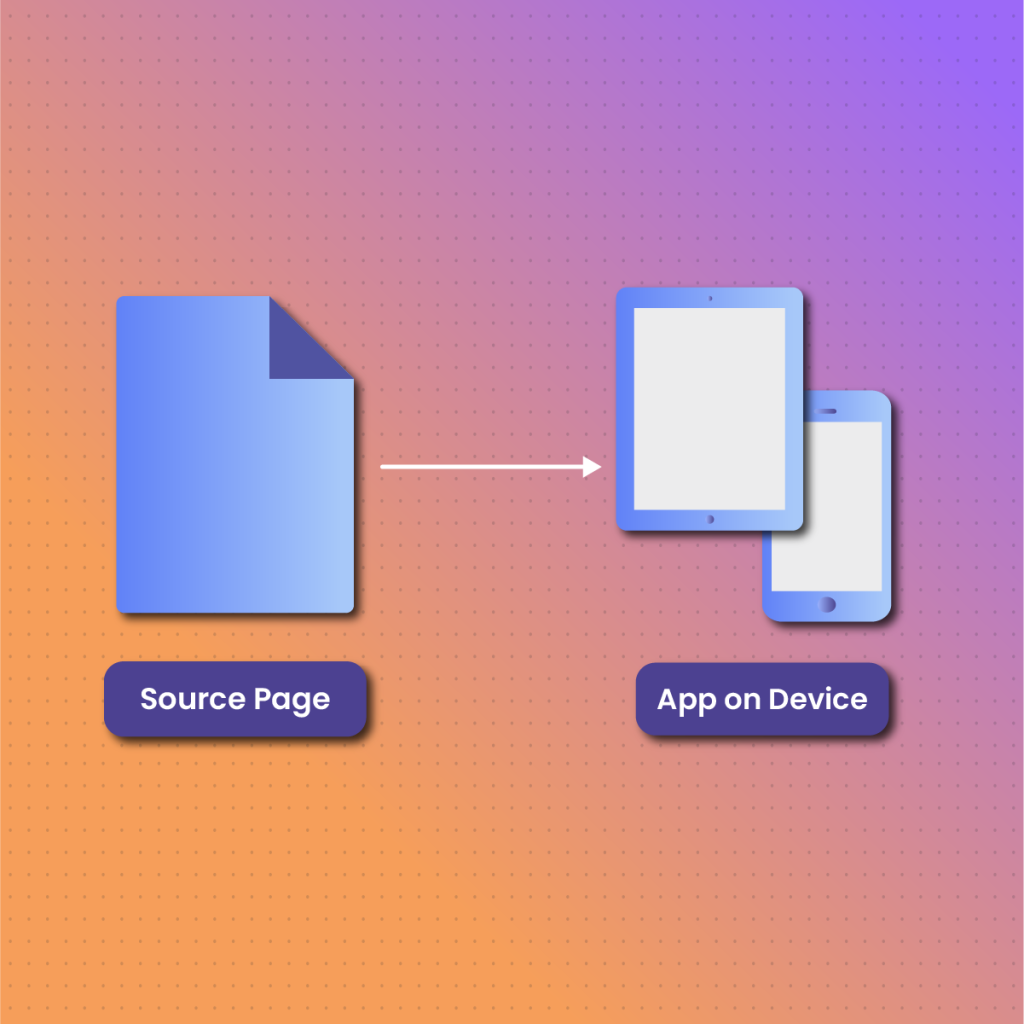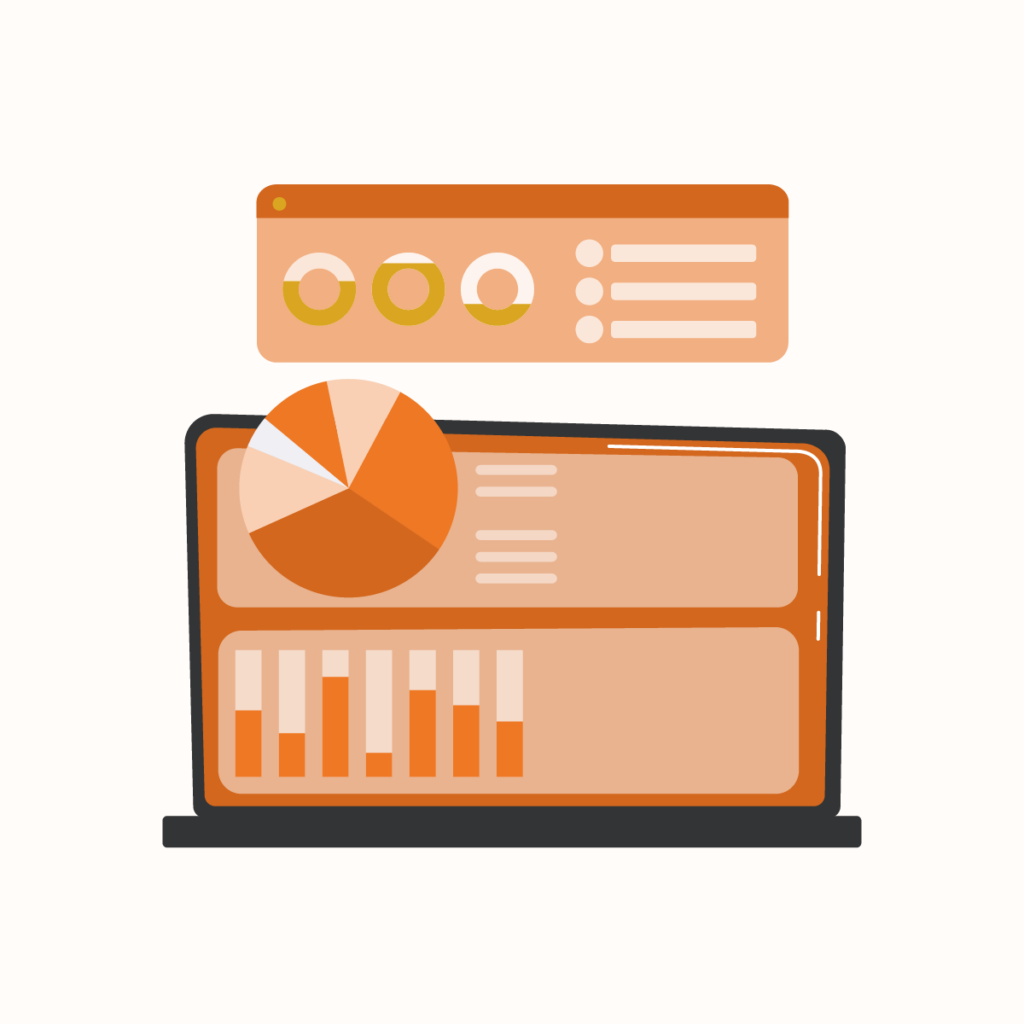Introduction To Screen Scraping
Before the days of web scrapers, data collection was a huge challenge for businesses. However, times have changed, and businesses can automate their processes with screen scraping.
Manual web scraping usually involves copying and pasting, which is time-consuming, frustrating, and prone to errors. You would have to go through the web page, copy the data, and save it on your computer.
The concept of screen scraping allows you to interact with the screen and retrieve data, which is critical for business operations. Therefore, this guide will examine what screen scraping is, its use cases, pros and cons, how to use it, and NetNut’s solution.
Let us dive in!

What is Screen Scraping?
Screen scraping is a method used to extract data from the visual output of a computer screen, often from web pages or software applications, where direct access to the underlying data is restricted or not available. Unlike web scraping, which typically involves parsing HTML or interacting with APIs, screen scraping captures the data as it is presented to the user, often using techniques such as Optical Character Recognition (OCR) to convert the on-screen text and images into a usable format. This is a method of data collection that involves copying data displayed on a digital screen. This technique extracts visual data from applications and websites for the purpose of research.
This approach is commonly employed when traditional data extraction methods are not feasible, such as when dealing with legacy systems, proprietary software, or websites that heavily use JavaScript to dynamically render content. Screen scraping allows users to automate the process of data collection by simulating human interaction with a screen, making it possible to gather information from a wide range of sources, even those that are designed to prevent automated access.
A screen scraper retrieves data from web pages or applications, parses it, and presents it to you. Therefore, it works by extracting raw data from the UI elements of the application or website.
It is often employed to display data from legacy applications with user interfaces that are more modern.

How Does Screen Scraping Work?
Screen scraping works by capturing the visual representation of data displayed on a screen and converting it into a structured format that can be analyzed or processed. The process typically begins with a screen scraping tool or software that interacts with the target application or website. This tool simulates human actions, such as scrolling, clicking, or typing, to navigate through the interface and display the required data on the screen. Screen scraping works with a program that can access a website or application and capture the data on the screen. This mostly happens when a person shares their details with a third-party provider (TPP). The TPP then uses these details to access the account and copies the data into another application.
For example, a third-party provider may request access to your financial data on a budgeting app. When you give it access, it can use the insight to offer suggestions on the best way for you to save by analyzing your financial behavior.
Once the data is visible, the tool takes a snapshot of the screen or a specific portion of it. If the data is in text form, OCR technology is often used to recognize and extract the text from the image. This extracted text is then parsed and organized into a format suitable for further analysis, such as a spreadsheet or a database.
In some cases, screen scraping tools can directly access the Document Object Model (DOM) of a web page to extract data, but this method is less common when dealing with highly dynamic or protected content. Instead, the emphasis is on capturing what the user sees on the screen, which can include text, images, and even interactive elements.
Therefore, screen scrapers are programs designed to search and identify user interface elements. They extract the data, transform it, and send it to another software. Screen scrapers may utilize an OCR (optical character recognition) technology to extract data involving images. In simpler terms, screen scraping is a method that can extract visual data from a UI containing charts, images, or graphs and save it in text format.
What Is Screen Scraping Used For?
Screen scraping has several use cases, which are often categorized into collecting sensitive information and scraping publicly available data. The use cases of screen scrapers include:
Price monitoring
Price monitoring is a significant use case of screen scraping. The digital marketplace is constantly evolving, and prices fluctuate due to several reasons. Therefore, as an online seller, you must stay informed about these price changes. This data helps you continuously adjust your price, which gives you a competitive edge.
Therefore, scraping becomes an invaluable tool that delivers real-time market data that empowers business owners to make informed decisions regarding pricing. As a result, they can find a balance between profit and competition.
Market research
Data is the cornerstone of every thriving business. Therefore, there is a need to retrieve competitors’ data to stay ahead of trends. Screen scraping offers a unique solution to the research process by collecting data (even on a large scale), transforming it, and transferring it to another application.
As a result, businesses can gain insights to make necessary adjustments to their operation strategies. This allows them to stay updated, head of the competition, and quickly adapt to new trends within the marketplace.
Ad verification
Companies invest a substantial amount in advertisements because they are a marketing strategy. However, what is the guarantee that these ads reach the target audience and are relevant?
Screen scraping allows companies to collect data that will inform their choice of advertisement to ensure the message or content is suitable for the target audience. In addition, businesses can use this method to verify ad placement, visibility, and reach. This verification ensures that the capital invested in these ads can yield quality ROI.
Banking sector
Banking is a dynamic sector where data is invaluable in making decisions. Financial institutions, especially lenders, use screen scraping to gather critical information about their customers.
Some banking applications are designed to use screen scrapers to collect data and send it to another application. However, these apps cannot access your data without your approval. Therefore, it is necessary to read the Terms and Conditions before agreeing to all. Screen scraping provides data that can optimize user experience and provide customized packages/solutions to a customer.
Website transitions
Website layout, design, and user interface are constantly evolving. Therefore, organizations using heavy websites may need to transition to a more modern one. However, they need to preserve their data -the core of their operations and that is where screen scraping becomes useful.
Screen scraping can be used to move data quickly and efficiently from old websites into new ones. Therefore, screen scraping streamlines the process of website transitioning and ensures the safety of data.
In addition, it can facilitate the extraction of data from outdated technologies into new, user-friendly interfaces.
Review monitoring
Screen scraping is a useful tool for review monitoring. Reviews play a significant role in brand reputation, which affects its success. Search engines consider reviews when ranking brand websites. Therefore, it is critical to monitor reviews and tackle any negative reviews to increase their rankings.
Reviews can be described as unbiased business reports from customers. Businesses can use screen scrapers to gather and analyze large quantities of reviews. Reviews provide insight into customer sentiments and serve as a foundation for actionable plans.
Benefits of Screen Scraping
Screen scraping offers several benefits, especially in scenarios where other data extraction methods fall short. One of the primary advantages is its ability to access data from systems that do not provide APIs or where the data is locked behind a complex user interface. This makes screen scraping an invaluable tool for integrating with legacy systems or proprietary applications that are otherwise difficult to interact with programmatically.
Another benefit of screen scraping is its versatility. It can be used to extract data from a wide range of sources, including web pages, desktop applications, and terminal-based interfaces. This flexibility allows businesses to automate data collection across different platforms, saving time and reducing the risk of manual errors.
Screen scraping also enables real-time data extraction, making it possible to capture the latest information as it appears on the screen. This is particularly useful in industries where timely access to data is critical, such as finance, market research, and competitive intelligence.
Why Use Screen Scraping?
Screen scraping has a lot of benefits to offer. Some of the reasons include:
Speed and scalability
The primary advantage of using screen scraping is its speed and scalability. This method retrieves data at a faster speed than manual copying and pasting. In addition, you can use screen scrapers to collect large volumes of data quickly and efficiently. As a result, it is an effective tool for businesses to retrieve large amounts of data in a short period.
Furthermore, the speed and scalability of screen scrapers make them an efficient tool when timely access to data is critical.
Accuracy
Another reason to use screen scrapers is their accuracy. Manually copying and pasting data is a repetitive task associated with a high risk of mistakes. However, screen scraping eliminates the possibility of human error by ensuring the consistency and accuracy of data collected.
As a result, the data gathered is reliable and in a format that is easy to read and understand. This reduces errors and the need for extensive data sorting, ensuring high-quality data for decision-making.
Customization
Another significant benefit of screen scraping is customization. You can customize it to identify and collect specific data types, which optimizes the process of data scraping.
Regardless of your scraping needs- financial data, product prices, or customer reviews, you can customize it to scrape exactly what you need.
Integration
You can integrate screen-scraping software with other applications to streamline the process of data collection and transformation. An organization could integrate screen scraping with its CRM system to update customer data automatically. This minimizes errors associated with manual data entry and helps to optimize customer experience.
Simplicity
Screen scraping stands out for its simplicity. When collecting data manually, each website is visited individually, and this can be time and effort-intensive. However, once you launch screen scraping, it extends beyond a single website to cover the whole domain.
This approach makes the process of web data retrieval simple. Therefore, it is an efficient alternative for organizations seeking to gather data from various sources simultaneously.
Data Quality
Data quality is another reason to use screen scrapers. It produces data in machine-readable formats. Therefore, you can seamlessly integrate the data with other software, and this optimizes data analysis, interpretation, and use. Therefore, businesses can leverage the data quality to generate reports, including tables, graphs, and charts, to make informed decisions
What are the Limitations of Screen Scraping?
Although there are several benefits of screen scraping, there are some limitations. They include:
Regular update
Some websites regularly update their structure and access, and such alteration affects the effectiveness of screen scrapers. Screen scraping tools may be unable to interact with these websites to collect data. As a result, these tools need regular maintenance to adapt to changes in the website they collect data. Failure to update or maintain the screen scraping process can disrupt the efficiency of data collection.
Lacks data analysis tools
Another limitation is its lack of data analysis tools. Unlike Google Sheets, which contain several features for data analysis and representation, screen scrapers fall short in this aspect.
Although data is stored in machine-readable format, it does not provide any useful analysis that helps you draw conclusions. Therefore, to get meaningful insights from data collected using screen scraping, you need to leverage data analysis software.
High risk of misuse
Although screen scraping can be used for legal data collection, there is a high chance of misuse. The unethical use of screen scrapers leads to data theft, which poses a significant risk for security and privacy breaches.
Lack of data minimization
Remember, we mentioned that users have to grant access to screen scraping tools. However, screen scraping usually collects all data on a website rather than the specific consented data. For example, users may have consented to use specific data like name and date of birth (D.O.B), but screen scrapers extract all the data on the page. Therefore, the inability to extract targeted consented data may be a privacy concern.
How Websites/Apps Prevent Screen Scraping
Some websites have implemented measures to prevent screen scraping. They employ various techniques to identify and block scraping activities. Here are some techniques to prevent scraping:
CAPTCHAs
Websites use CAPTCHAs to ensure the privacy and security of their data. It can differentiate a human user from a bot. CAPTCHA works by providing image-based tasks that are often difficult for bots to complete. Once the bot fails the CAPTCHA task, the website blocks its access.
Web application firewalls
Some websites/apps use web application firewalls to prevent screen scraping. The firewall can identify behavior or signature-based activities that trigger the anti-scraping measures.
Limit access for individual IP addresses
One of the classic signs of scraping is a large number of requests from a single IP address within a short time. Some websites have implemented this measure to protect their data. Once this measure is triggered, your IP address may be banned. As a result, you will not be able to access the data you need.
Fraud detection software
Fraud detection software is a technique that can identify scraping. Even if you are already scraping data from the website, once the software is triggered, your access to the website will be restricted. Therefore, if you need urgent data for critical decision-making, you may need to find an alternative.
Since we have established that data is critical to the success of businesses, how do you overcome these restricting measures?
Read on to discover solutions!
Benefits of Using NetNut Proxies With Screen Scraping
Integrating NetNut proxies with your screen scraping activities provides significant advantages, enhancing both the efficiency and security of your operations. One of the key benefits is the ability to bypass geo-restrictions and access content from different locations around the world. By routing your requests through NetNut’s global network of residential proxies, you can ensure that your screen scraping activities appear as though they are originating from a legitimate user in the target location, reducing the likelihood of being blocked or detected.
NetNut proxies also offer enhanced privacy and anonymity, masking your real IP address and protecting your identity while you scrape data. This is particularly important when scraping websites that implement anti-scraping measures or track IP addresses to limit access. By rotating IP addresses and using residential proxies, NetNut helps you avoid detection and ensures uninterrupted access to the data you need.
Additionally, NetNut’s proxies provide reliable and high-speed connections, which are essential for maintaining the performance and stability of your screen scraping operations. Whether you are scraping large volumes of data or accessing dynamic content that requires fast and consistent connectivity, NetNut’s infrastructure is designed to support demanding use cases.
Using Proxies with Screen Scrapers
Integrating proxies with screen scrapers enhances their effectiveness and reliability:
-
Anonymity: Proxies conceal your real IP address, making it difficult for target websites to detect and block your scraping activities.
-
Avoiding Rate Limits: By distributing requests across multiple IP addresses, proxies help prevent triggering rate limits or anti-scraping mechanisms, ensuring uninterrupted data extraction.
-
Accessing Geo-Restricted Content: Proxies enable you to route your requests through IP addresses in different geographic locations, allowing access to region-specific data.
-
Improved Reliability: Utilizing a pool of proxies reduces the risk of IP bans, enhancing the stability and efficiency of your screen scraping operations.
NetNut offers a robust proxy infrastructure with a vast pool of residential and datacenter IPs, ensuring seamless integration with your screen scraping tools to optimize performance and data accessibility.
Automate Screen Scraping with Netnut
When you need to automate your screen scraping activities, use the industry-leading solution- NetNut Scraper API. This in-house solution helps optimize the performance of screen scraping tools.
Regardless of the measures to prevent scraping, proxies offer a solution to help you get data. These proxies allow you to access websites anonymously and effectively bypass CAPTCHAs.
Are you worried your IP may be blocked? This is where Unblocker comes in a solution that allows you to use screen scraping without worrying about being blocked.
In addition, Netnut offers various proxy solutions that can seamlessly integrate with screen scraping. Consequently, it helps you avoid IP bans to ensure continuous access to data.
What are the Differences between Screen Scraping and Open Banking?
The primary difference between screen scraping and open banking is how data is accessed and used. Open banking involves collecting data with permission from financial institutions, which is used to optimize financial services provided to customers. On the other hand, screen scraping involves extracting data without permission from the financial institution.
Regulated organizations use open banking to get secure and limited access to customers’ financial data. These data include those accessible only by banks or financial institutions. Open banking may include payment initiation, where third-party providers can make payments for customers with their consent.
Is Screen Scraping legal
The legality of screen scraping has been a controversial issue over the years. According to the PSD2 law, designed to increase competition in the payment sector, it is legal. However, it must conform to some security checks.
For example, suppose a third-party provider is trying to use a customer’s bank details. In that case, it must interact with the bank for identification. However, most banks are transitioning to the use of APIs to facilitate access to customer data. The use of APIs indicates that the use of screen scrapers will soon become obsolete. Therefore, most banks in the UK provide API for access to account data.
Meanwhile, the European Banking Authority (EBA) has remained persistent in its stance to end the use of screen scrapers. However, the debate with shareholders is still ongoing.
Screen Scraping vs. Web Scraping
While both screen scraping and web scraping are methods of data extraction, they differ significantly in their approaches and applications:
-
Data Source: Web scraping involves extracting data directly from the HTML code of websites, accessing structured data elements. In contrast, screen scraping captures data as it is visually presented on the screen, often utilizing techniques like Optical Character Recognition (OCR) to interpret and extract information from images or rendered content.
-
Complexity and Accuracy: Web scraping is generally more straightforward and accurate due to the structured nature of HTML. Screen scraping can be more complex and prone to errors, as it must interpret visual data, which can vary in presentation and may be affected by screen resolution, layout changes, or dynamic content.
-
Use Cases: Web scraping is ideal for extracting data from websites with accessible HTML structures or APIs. Screen scraping is often employed when direct access to underlying data is restricted or when dealing with legacy systems lacking modern data export capabilities.
Understanding these distinctions is crucial for selecting the appropriate method for data extraction based on specific requirements and constraints.
Most Popular Screen Scraping Tools
Several tools have been developed to facilitate screen scraping, each offering unique features to cater to different needs:
-
Octoparse: A user-friendly, no-code web scraping tool that can handle complex data extraction tasks. It offers both free and paid versions, making it accessible for various users.
-
ParseHub: An easy-to-use web scraping tool that can handle websites that use JavaScript, AJAX, and other dynamic content. It offers both free and paid versions, with the free version allowing up to 200 pages per run.
-
Cheerio: A fast web scraping tool that does not interpret the result as a web browser, making it efficient for parsing and manipulating HTML and XML documents. It is free and open-source.
-
Scrapy: An open-source and collaborative web crawling framework for Python, known for its speed and scalability. It is free to use.
-
WebScraper.io: A web scraping tool that allows you to scrape websites directly from your browser without the need to set up any tools or write code. It offers a free tier with limited features.
Selecting the appropriate tool depends on factors such as the complexity of the scraping task, the need for coding, budget constraints, and specific project requirements.
Final Thoughts on Using A Screen Scraper
Screen scraping is an effective tool that supports businesses in critical decision-making. It is useful in market research, verifying ads, price monitoring, and optimizing brand reputation. In addition, screen scrapping allows for fast and scalable data extraction operations.
Some of its limitations include the need for regular updates and maintenance, a lack of data analysis tools, and privacy concerns due to the high chance of data misuse.
Therefore, businesses must consider the pros as well as the limitations associated with using screen scrapers. You can optimize scraping activities by using proxies, which help you bypass CAPTCHAs.
Contact us today to get customized solutions for your scraping activities.
Frequently Asked Questions
Is screen scraping the same as web scraping?
No, screen scraping is not the same as web scraping. The later copies displayed pixels, while web scraping involves interacting with a website’s HTML code.
Web scraping is the process of retrieving data from web pages by downloading the website and saving the data in a structured format.
On the other hand, screen scraping involves extracting data from an application’s user interface. Screen scrapers can read the data on the screen, including images, text, and graphics.
Is screen scraping secure?
Security and privacy concerns are some of the limitations of screen scraping, especially with financial data. This is because the third-party provider, when granted access to data like login details, can mimic the owner’s interaction with the data.
In addition, the European Commission and Financial Conduct Authority (United Kingdom) prohibit the use of screen scraping for extracting financial data.
What tools are used for screen scraping?
Several tools are used for screen scraping, and they include:
- UiPath
- FMiner
- Macro Scheduler
- ScreenScraper
- Existek
- Diffbot






